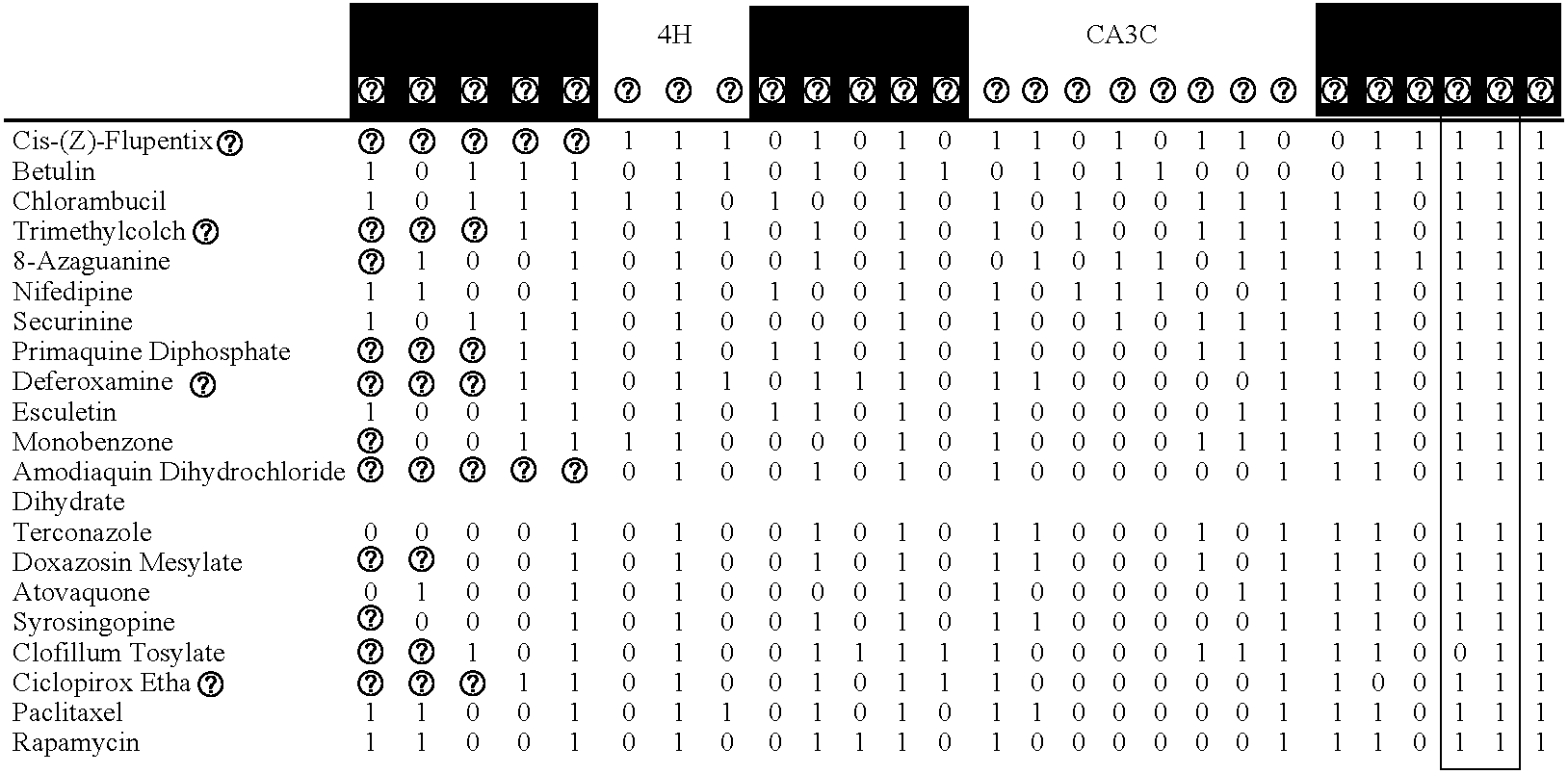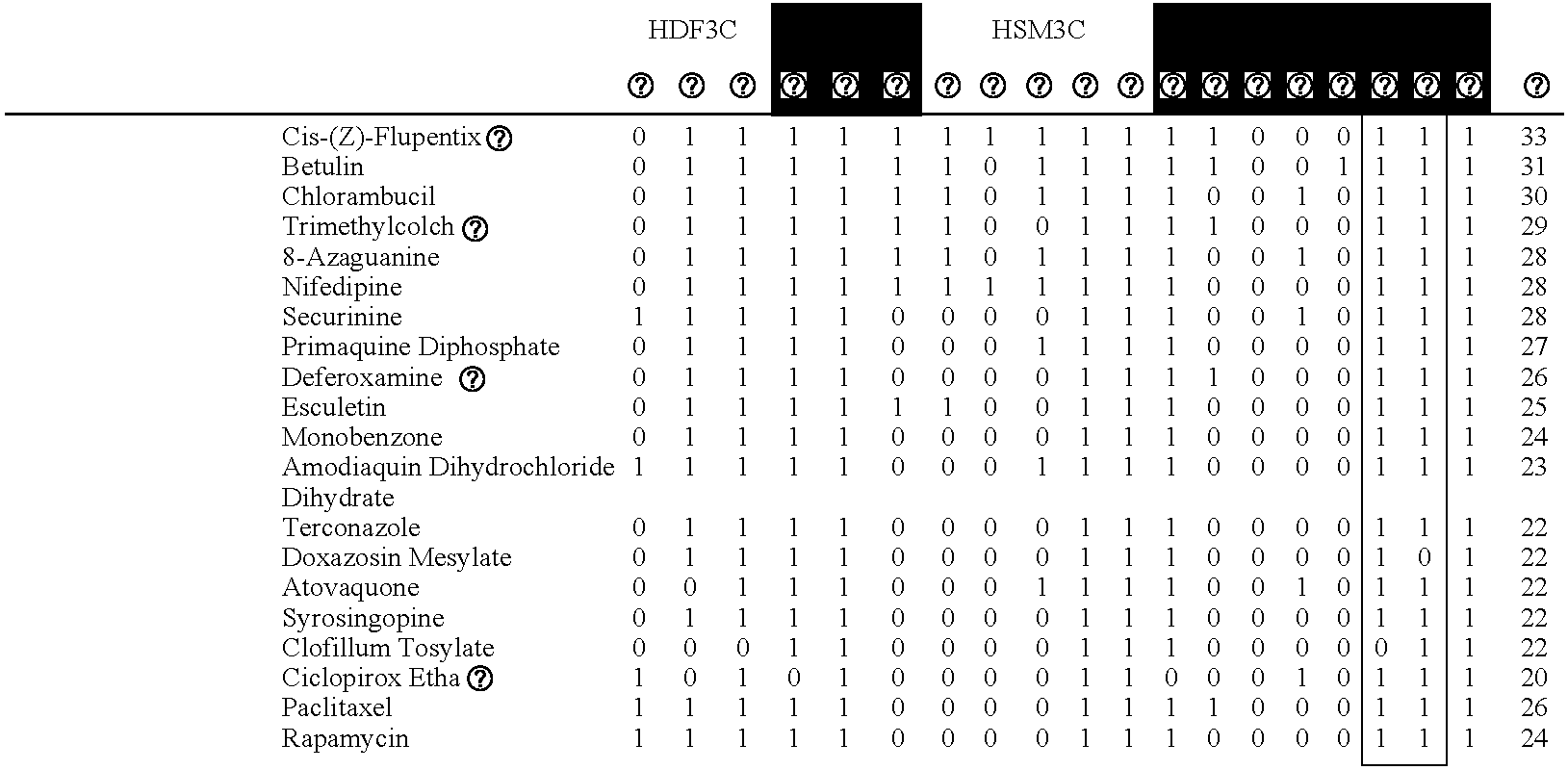Methods for identifying agents and their use for the prevention of restenosis
- Summary
- Abstract
- Description
- Claims
- Application Information
AI Technical Summary
Benefits of technology
Problems solved by technology
Method used
Image
Examples
examples
[0082]Cell culture. Human umbilical vein endothelial cells (HUVEC) were pooled from multiple donors, cultured according to standard methods, and plated into microtiter plates at passage 4. Human neonatal foreskin fibroblasts (HDF) from 3 donors were pooled and cultured according to standard methods. 24 hr before stimulation with cytokines, confluent HDF in microtitre plates were serum starved. Coronary artery endothelial cells (CAEC), coronary artery smooth muscle cells (CASMC) and umbilical artery smooth muscle cells (SMC) cultured according to standard methods. Peripheral blood mononuclear cells (PBMC) were prepared from buffy coats from normal human donors according to standard methods. Concentrations / amounts of agents added to confluent microtitre plates to build each system were as follows: cytokines (IL-1 beta, 1 ng / ml; TNF-alpha, 5 ng / ml; IFN-gamma, 20 ng / ml; TGF-beta, 5 ng / ml; IL-4, 5 ng / ml), activators (histamine, 10 microM; SAg, 20 ng / ml or LPS, 0.2 ng / ml), PBMC (7.5×104 c...
PUM
| Property | Measurement | Unit |
|---|---|---|
| Structure | aaaaa | aaaaa |
| Cell proliferation rate | aaaaa | aaaaa |
Abstract
Description
Claims
Application Information
 Login to View More
Login to View More - Generate Ideas
- Intellectual Property
- Life Sciences
- Materials
- Tech Scout
- Unparalleled Data Quality
- Higher Quality Content
- 60% Fewer Hallucinations
Browse by: Latest US Patents, China's latest patents, Technical Efficacy Thesaurus, Application Domain, Technology Topic, Popular Technical Reports.
© 2025 PatSnap. All rights reserved.Legal|Privacy policy|Modern Slavery Act Transparency Statement|Sitemap|About US| Contact US: help@patsnap.com



